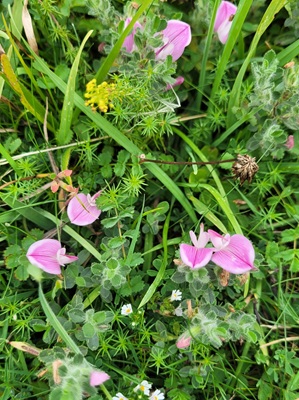Flower Properties
| Property | Value |
|---|---|
| English Name | Creeping Restharrow |
| MainColor | Pink |
| PlantType | |
| Growth Type | |
| Season | August |
| ImageUrl | Ononis-001 |
| Photographer | DP |
| Location | |
| Human Toxicity | Non_Toxic |
Flower Details
Description
Ononis spinosa, commonly known as Spiny Restharrow, is a perennial herb characterised by its spiny stems and pinkish-purple flowers. It typically grows in dry, sandy soils and can reach heights of up to 60 cm. The leaves are small and trifoliate, contributing to its distinctive appearance.
Distribution
This species is native to Europe and parts of Asia, often found in coastal areas and dry grasslands. It thrives in well-drained soils and can be seen in the wild across the UK. Its adaptability allows it to flourish in various habitats.
Medicinal/Other Uses

✅ Historically, Ononis spinosa has been used in traditional medicine for its diuretic properties. It has also been employed in herbal remedies to treat various ailments, including urinary disorders.
Edibility

The young shoots and leaves of Spiny Restharrow can be consumed, though they are not commonly eaten. They may be used in salads or as a herbal tea, but caution is advised due to their spiny nature.
Human Toxicity
While generally safe, it is recommended to consume only small quantities of the plant to avoid any adverse reactions. Always consult a healthcare professional before using it for medicinal purposes.
Pet Toxicity

Non Toxic to dogs and cats - ingestion of the plant is not known to cause harm to pets.
Active Compounds
The plant contains flavonoids and other phytochemicals, which are thought to contribute to its medicinal properties. However, specific active compounds have not been extensively studied.
